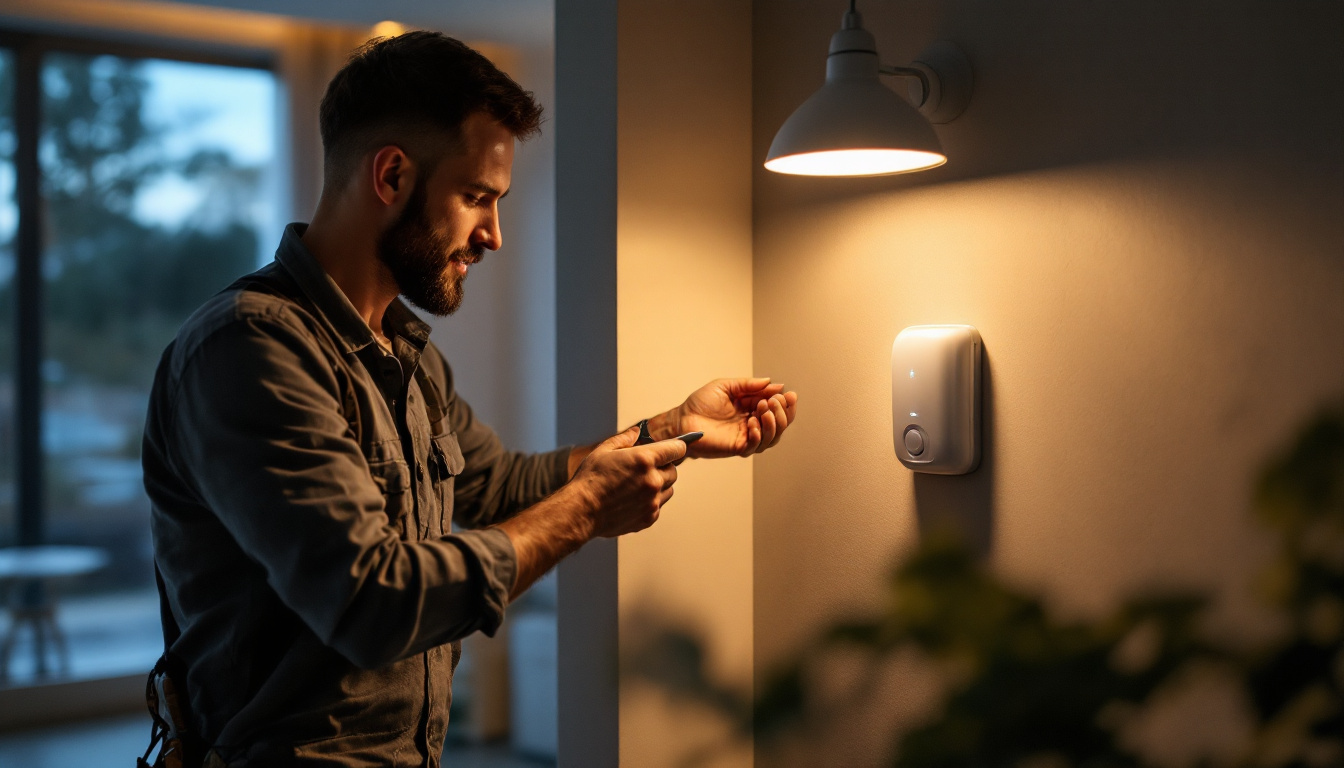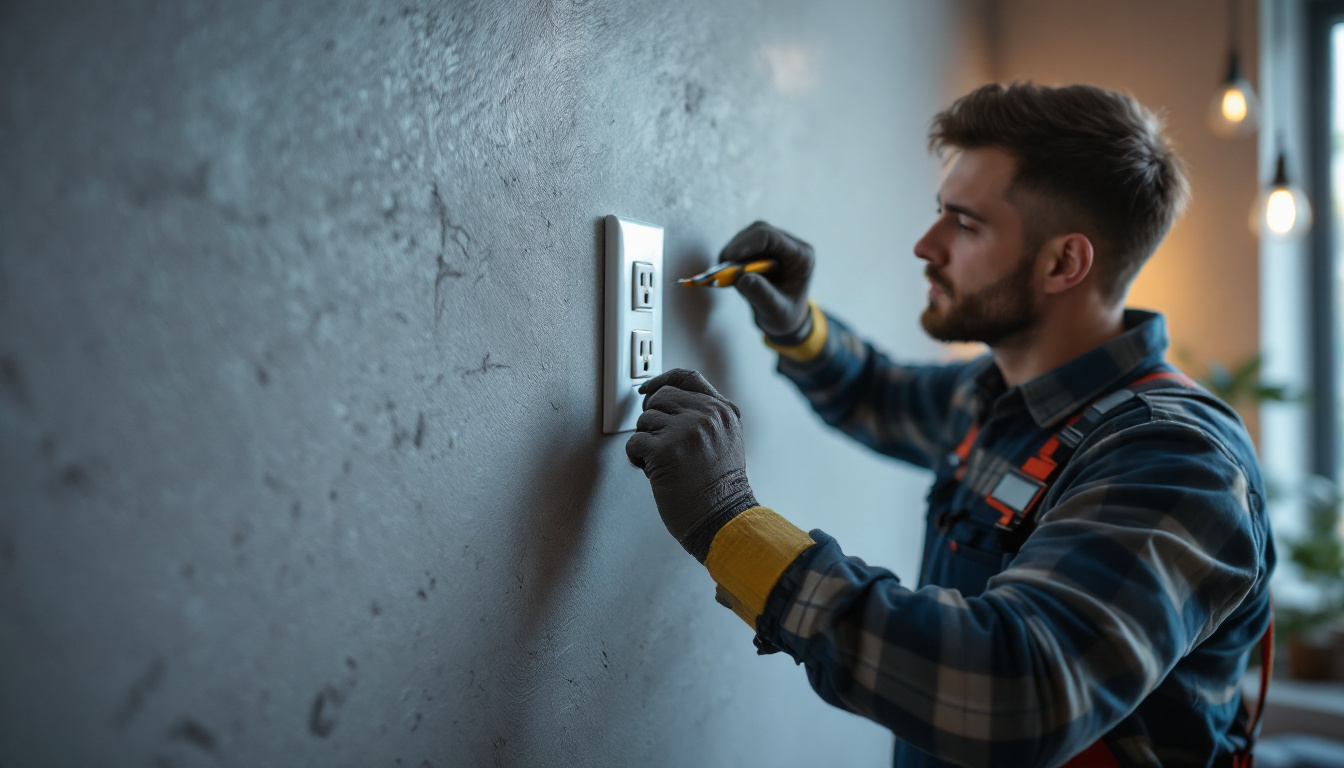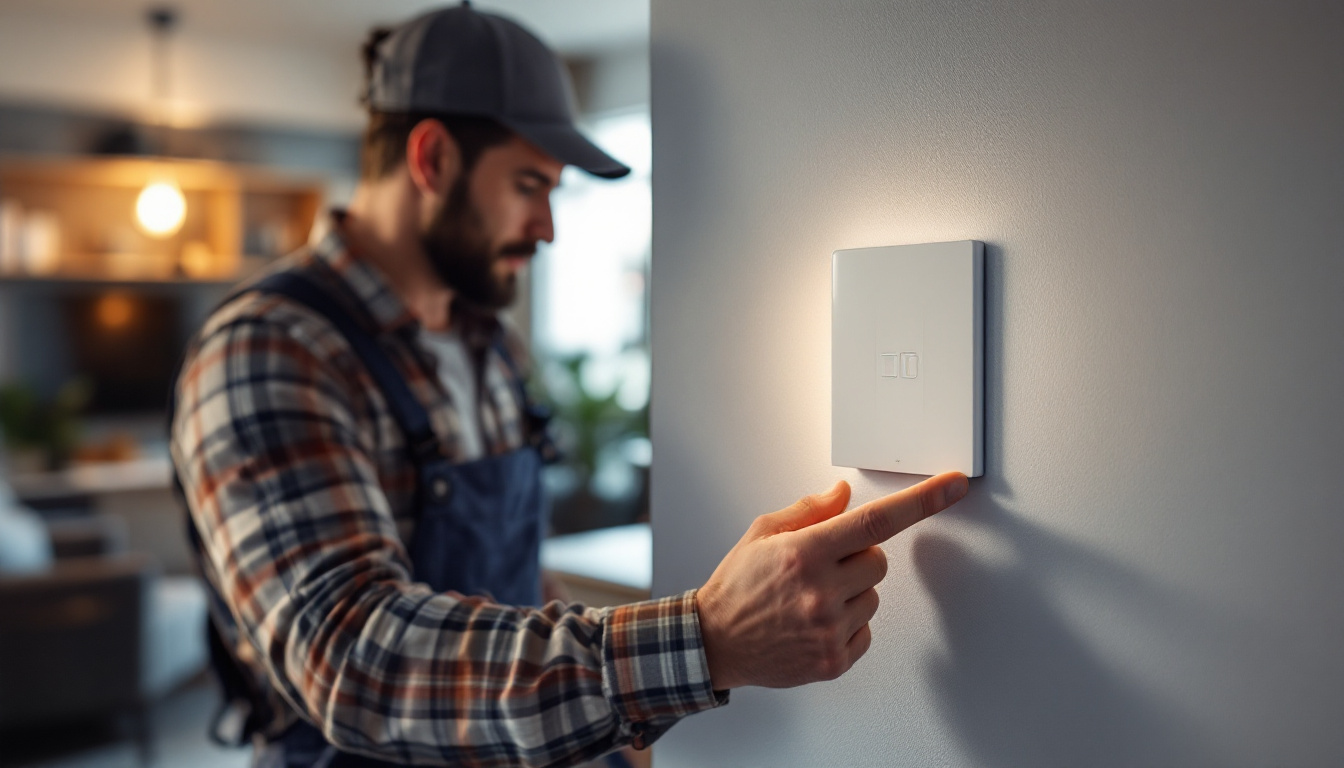
In the realm of lighting design and installation, the integration of technology has become increasingly vital. One such technological advancement is the light motion sensor, a device that enhances the functionality and efficiency of lighting systems. For lighting contractors, mastering the use of these sensors can lead to improved project outcomes and increased client satisfaction.
Light motion sensors not only provide convenience but also contribute to energy savings and enhanced security. Understanding how to effectively implement these devices is essential for any lighting contractor looking to stay ahead in a competitive market.
These sensors operate by detecting movement within a specified range, triggering the lighting system to turn on or off based on occupancy. This feature is particularly beneficial in both residential and commercial settings, where it can help reduce energy consumption during periods of inactivity. For instance, in a commercial office space, motion sensors can automatically turn off lights in unoccupied meeting rooms, leading to significant cost savings over time. Furthermore, the integration of these sensors with smart home technology allows for seamless control, enabling users to customize their lighting experience according to their preferences and schedules.
Moreover, the versatility of light motion sensors extends beyond mere energy efficiency. They play a crucial role in enhancing security measures for both homes and businesses. By illuminating dark areas when motion is detected, these sensors can deter potential intruders and provide peace of mind to property owners. In addition to their security benefits, many modern sensors are equipped with advanced features such as adjustable sensitivity settings and the ability to differentiate between human and animal movement, allowing for tailored responses that minimize false alarms. As technology continues to evolve, the future of light motion sensors promises even greater innovations, making them an indispensable tool for lighting professionals aiming to deliver cutting-edge solutions to their clients.
Light motion sensors are devices that detect movement within a designated area and activate lighting accordingly. These sensors can be used in various applications, from residential settings to commercial spaces, providing a seamless user experience. They work by utilizing infrared technology, which senses changes in heat, or by using ultrasonic waves to detect motion.
The primary function of these sensors is to turn lights on when someone enters a space and turn them off when the space is vacated. This not only enhances safety but also contributes to energy efficiency by reducing unnecessary power consumption. Additionally, many modern light motion sensors are equipped with advanced features such as adjustable sensitivity and delay settings, allowing users to customize their operation based on specific needs and environments. This adaptability makes them an excellent choice for a wide range of settings, from busy hallways to quiet residential areas.
There are several types of light motion sensors available, each designed for specific applications. The most common types include passive infrared (PIR) sensors, ultrasonic sensors, and dual-technology sensors.
PIR sensors are the most widely used due to their cost-effectiveness and reliability. They detect motion by measuring changes in infrared radiation emitted by objects in their field of view. Ultrasonic sensors, on the other hand, emit sound waves and measure the reflection to detect movement, making them suitable for areas with obstacles. Dual-technology sensors combine both PIR and ultrasonic technologies, providing enhanced detection capabilities. These dual-technology sensors are particularly beneficial in environments where false alarms can be a concern, as they require both types of signals to trigger the lighting, thereby increasing accuracy and reducing unnecessary activations.
Moreover, the integration of light motion sensors with smart home systems has revolutionized their functionality. Many of these sensors can now connect to Wi-Fi networks, allowing users to control their lighting remotely via smartphone apps. This feature not only enhances convenience but also enables users to monitor their homes in real-time, providing an added layer of security. Furthermore, some advanced models can even learn the habits of the occupants, adjusting their sensitivity and timing based on regular patterns of movement, which optimizes energy use and enhances the overall efficiency of the lighting system.
One of the most significant advantages of light motion sensors is their ability to conserve energy. By ensuring that lights are only on when needed, these sensors can lead to substantial reductions in electricity consumption. This not only benefits the environment but also translates to cost savings for clients.
In commercial settings, where lights may be left on for extended periods, the impact of motion sensors can be particularly pronounced. Implementing these devices can result in lower utility bills and a reduced carbon footprint, making them an attractive option for environmentally conscious clients.
Light motion sensors also play a crucial role in enhancing security. By automatically illuminating areas when motion is detected, they deter potential intruders and provide a sense of safety for occupants. This feature is especially valuable in outdoor applications, where well-lit spaces can discourage criminal activity.
Moreover, the presence of motion-activated lighting can provide peace of mind for homeowners and business owners alike, knowing that their properties are better protected against unauthorized access.
When selecting a light motion sensor for a project, several factors should be taken into account. These include the size of the area to be monitored, the type of environment (indoor or outdoor), and the specific needs of the client.
Additionally, contractors should consider the sensor’s range and sensitivity. A sensor with a wider detection range may be necessary for larger spaces, while sensitivity settings can be adjusted to minimize false triggers from pets or passing vehicles.
Proper installation is crucial for the effective functioning of light motion sensors. Contractors should ensure that sensors are mounted at the appropriate height and angle to maximize their detection capabilities. It is also essential to consider potential obstructions, such as furniture or landscaping, that may interfere with the sensor’s line of sight.
Furthermore, wiring and connectivity should be carefully planned to avoid complications during installation. Familiarity with local building codes and regulations is also necessary to ensure compliance and safety.
Joining industry associations can provide lighting contractors with valuable resources and networking opportunities. Organizations such as the National Electrical Contractors Association (NECA) and the International Association of Lighting Designers (IALD) offer educational materials, training programs, and access to industry experts.
These associations often host events and conferences, allowing contractors to stay updated on the latest trends and technologies in lighting design, including motion sensor applications.
In an age where online learning is more accessible than ever, numerous platforms offer courses specifically tailored for lighting professionals. Websites like Coursera, Udemy, and LinkedIn Learning provide a wealth of information on lighting technology, installation techniques, and energy efficiency practices.
These courses can help contractors enhance their skills and knowledge regarding light motion sensors, ensuring they are well-equipped to meet client demands and expectations.
Examining case studies of successful light motion sensor implementations can provide valuable insights for contractors. Many businesses have reported significant energy savings and improved security after integrating motion sensors into their lighting systems.
For instance, a retail store that installed motion-activated lighting in its aisles reported a 30% reduction in energy costs. This not only improved the store’s bottom line but also enhanced the shopping experience for customers, who appreciated the well-lit environment.
While light motion sensors offer numerous benefits, there are common pitfalls that contractors should be aware of. One frequent mistake is underestimating the sensor’s range and sensitivity, leading to inadequate coverage or excessive false triggers.
Another common issue is improper placement of sensors, which can hinder their effectiveness. Contractors should take the time to assess the environment and plan sensor placement carefully to optimize performance.
The future of lighting technology is leaning towards smart systems that integrate with home automation platforms. Light motion sensors are increasingly being incorporated into smart lighting solutions, allowing for seamless control and customization.
These systems can be programmed to adjust lighting based on occupancy patterns, further enhancing energy efficiency and user convenience. As the demand for smart home technology continues to grow, contractors must stay informed about these advancements to remain competitive.
As sustainability becomes a priority for many consumers, the demand for energy-efficient lighting solutions will only increase. Light motion sensors play a critical role in this shift, providing a practical way to reduce energy consumption.
Contractors who embrace sustainable practices and educate their clients about the benefits of motion sensors will be well-positioned to meet the evolving needs of the market.
Mastering the use of light motion sensors is essential for lighting contractors aiming to enhance their service offerings. By understanding the technology, benefits, and best practices associated with these devices, contractors can deliver superior lighting solutions that meet the needs of their clients.
Incorporating resources such as industry associations, online learning platforms, and case studies can further empower contractors to excel in their field. As technology continues to evolve, staying informed and adaptable will be key to success in the lighting industry.
Ready to elevate your lighting projects with the most efficient light motion sensors on the market? Look no further than LumenWholesale. Our commitment to empowering contractors with spec-grade lighting products at unbeatable wholesale prices ensures that you have access to the best in the industry. With LumenWholesale, you can say goodbye to inflated markups and hello to high-performance lighting that meets the highest industry standards. Plus, with free shipping on bulk orders, you’re guaranteed premium lighting at the best value — without any hidden fees. Make the smart choice for your lighting needs and experience the best value in wholesale lighting today!

Discover how Gu24 LED bulbs are transforming the lighting industry and impacting contractors’ profitability.

Discover how replacement recessed light covers can transform your lighting projects by enhancing efficiency and aesthetics.

Discover effective strategies and expert tips for lighting contractors to enhance their projects and boost client satisfaction.

Discover the benefits of light switch timers and why staying updated on this technology is crucial for lighting contractors.